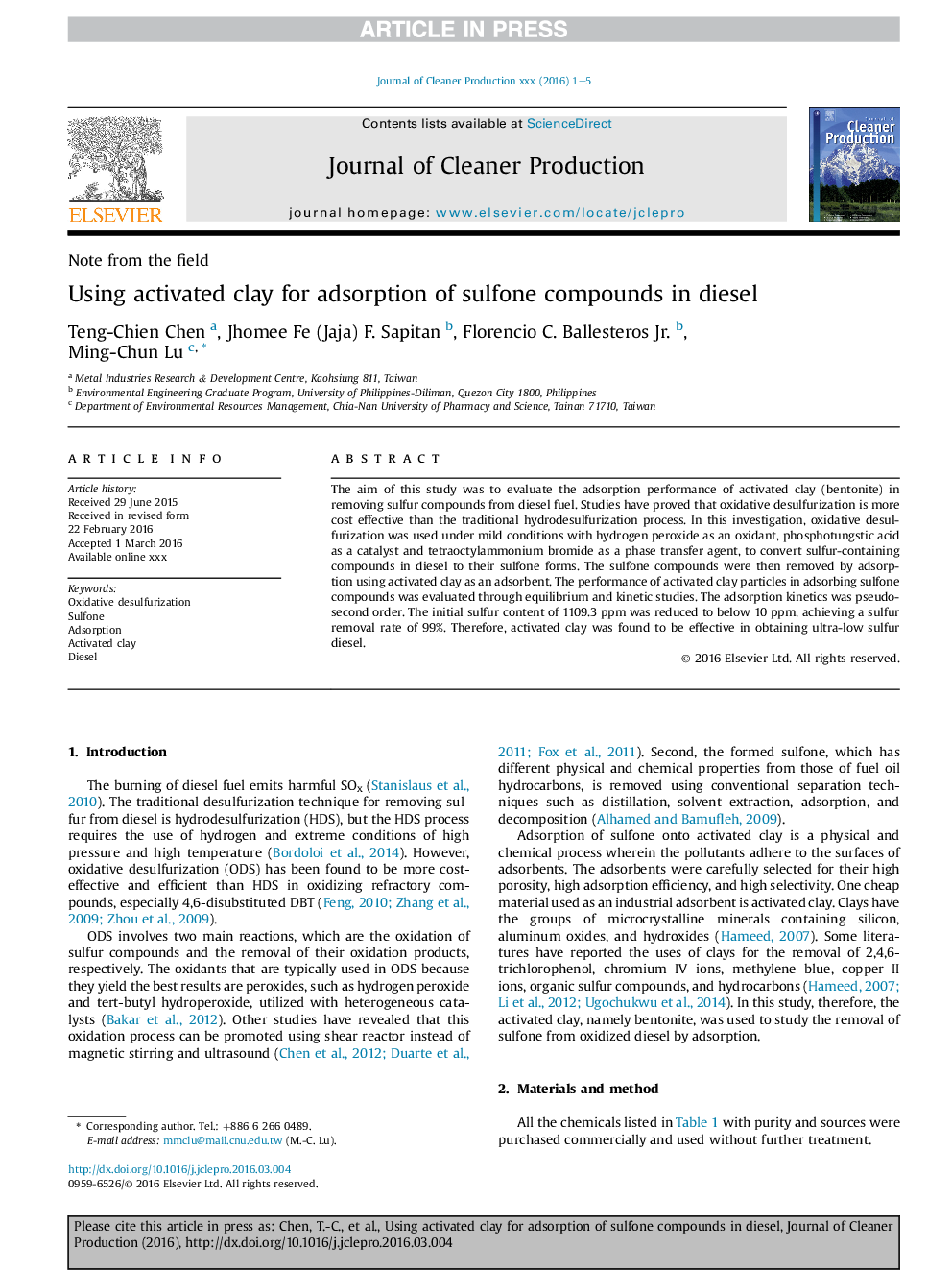| Article ID | Journal | Published Year | Pages | File Type |
|---|---|---|---|---|
| 8102358 | Journal of Cleaner Production | 2016 | 5 Pages |
Abstract
The aim of this study was to evaluate the adsorption performance of activated clay (bentonite) in removing sulfur compounds from diesel fuel. Studies have proved that oxidative desulfurization is more cost effective than the traditional hydrodesulfurization process. In this investigation, oxidative desulfurization was used under mild conditions with hydrogen peroxide as an oxidant, phosphotungstic acid as a catalyst and tetraoctylammonium bromide as a phase transfer agent, to convert sulfur-containing compounds in diesel to their sulfone forms. The sulfone compounds were then removed by adsorption using activated clay as an adsorbent. The performance of activated clay particles in adsorbing sulfone compounds was evaluated through equilibrium and kinetic studies. The adsorption kinetics was pseudo-second order. The initial sulfur content of 1109.3Â ppm was reduced to below 10Â ppm, achieving a sulfur removal rate of 99%. Therefore, activated clay was found to be effective in obtaining ultra-low sulfur diesel.
Related Topics
Physical Sciences and Engineering
Energy
Renewable Energy, Sustainability and the Environment
Authors
Teng-Chien Chen, Jhomee Fe (Jaja) F. Sapitan, Florencio C. Jr., Ming-Chun Lu,
